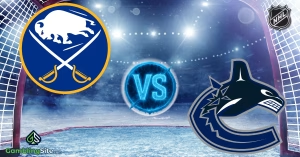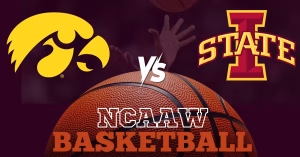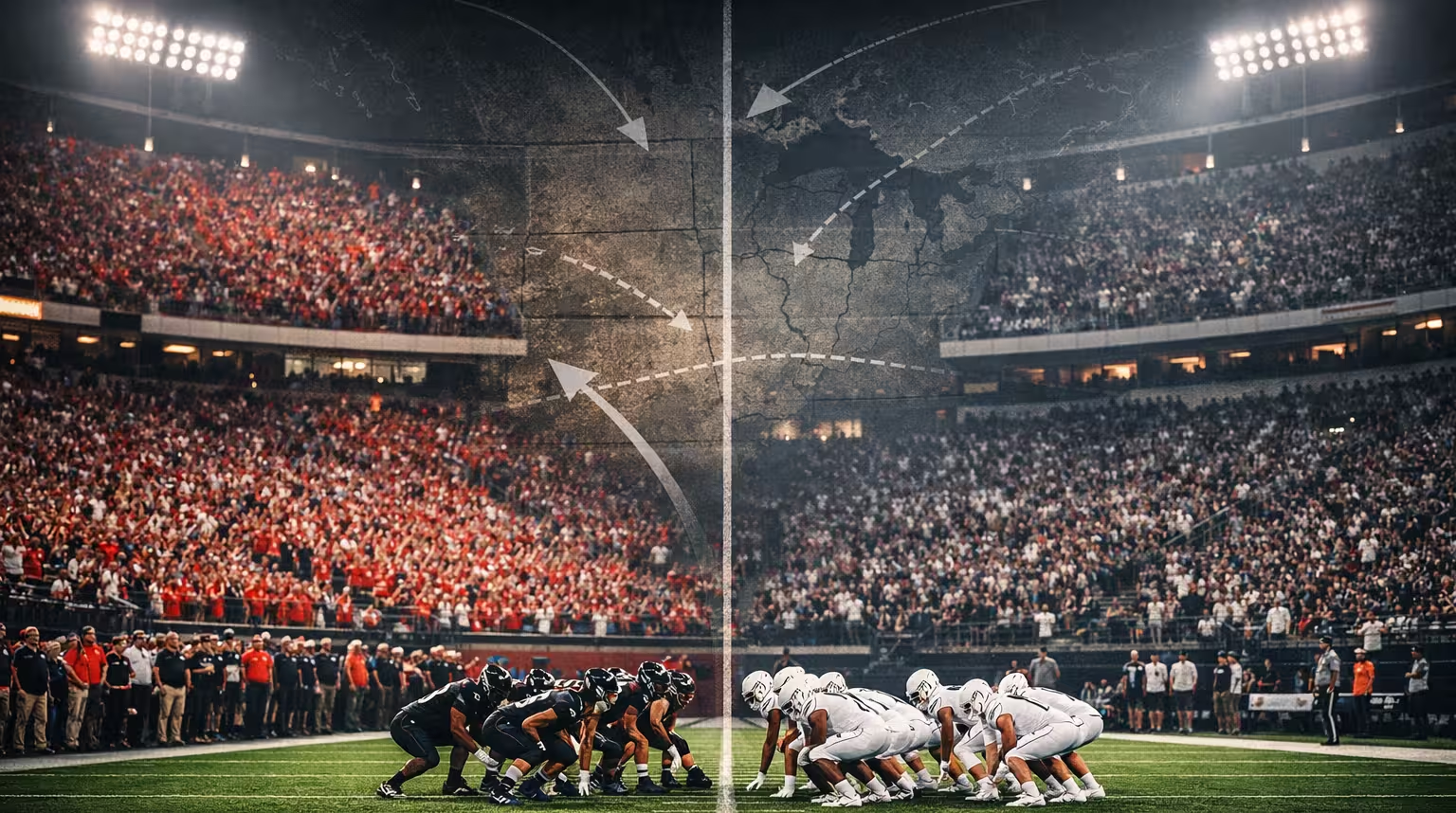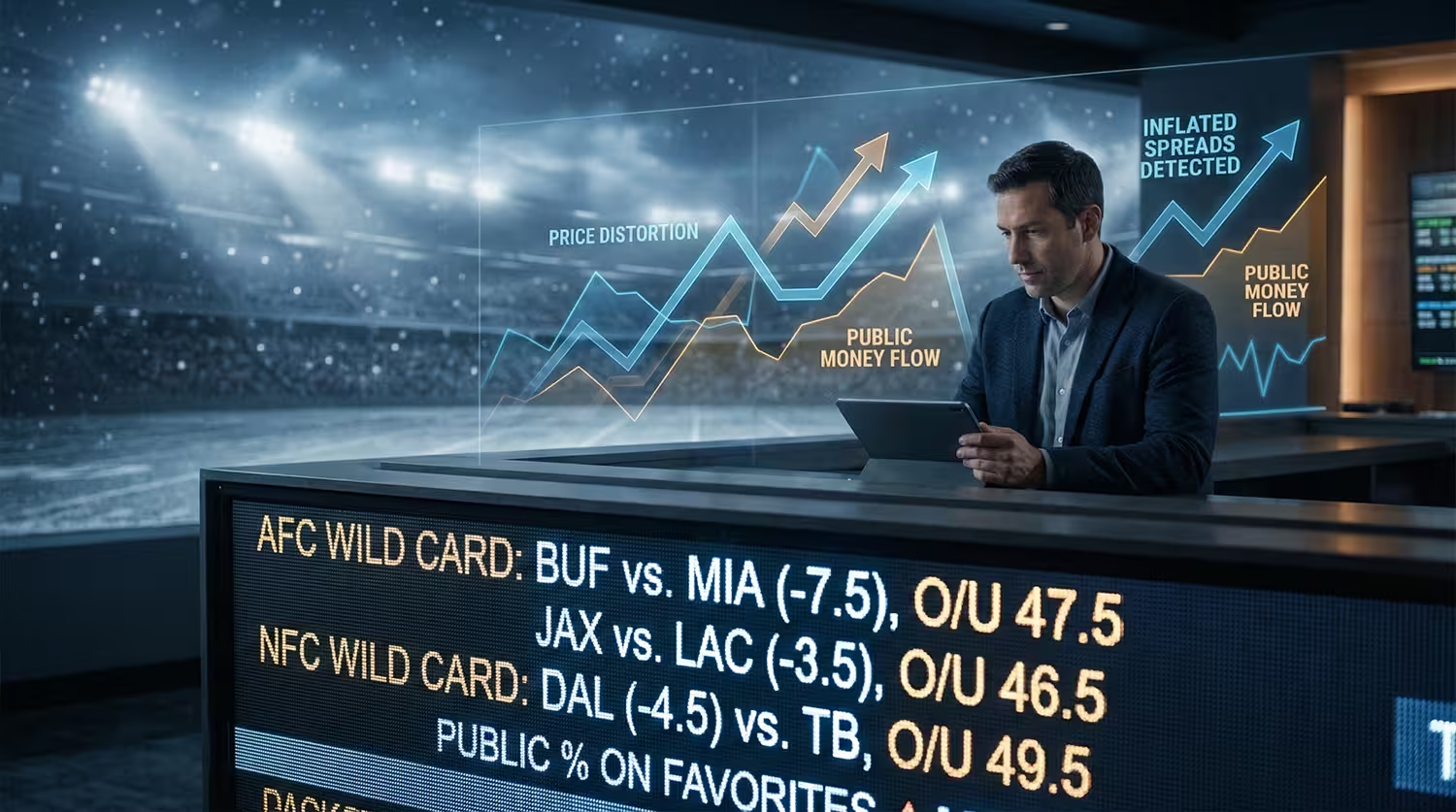2025 World Series Longshots: Best Value Teams Nobody’s Betting On
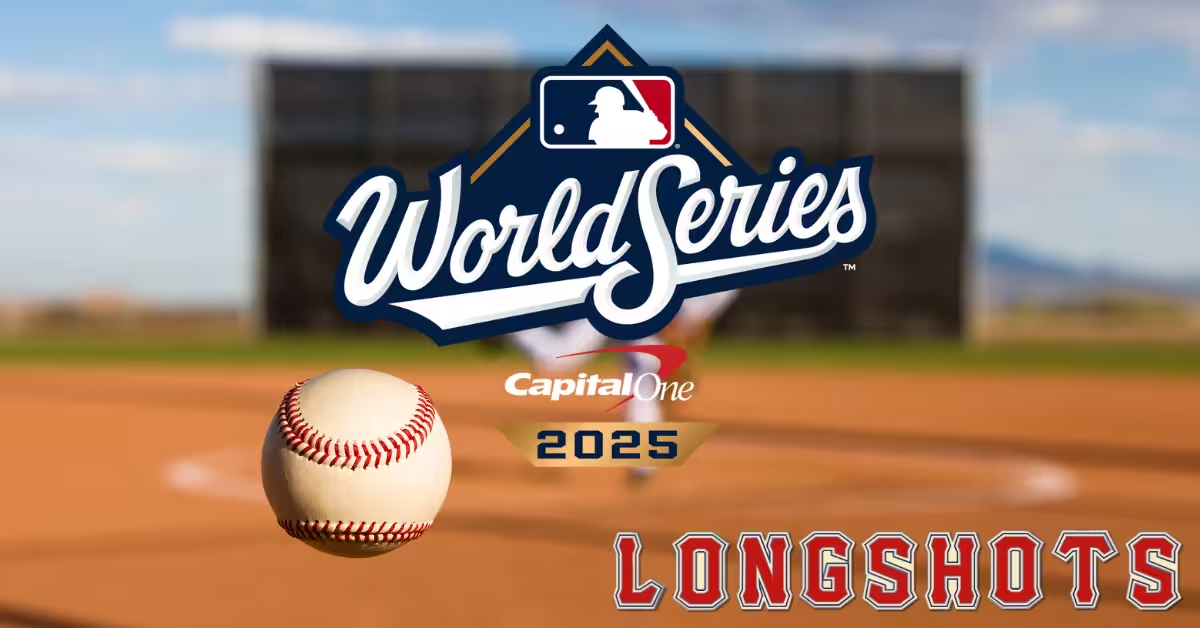
Time flies just like one of Aaron Judge’s homers. Yes, that was corny. But that doesn’t make it any less true, and that means the World Series will be here before we know it!
We don’t know who will end up at the biggest game in baseball, but we never count out the longshots. Who doesn’t love the underdog? And when you bet on one and they pull it off? Cha-Ching!
The truth is that a majority of casual bettors only focus on the fav teams, like, say, the Yankees or the Red Sox, but that isn’t always the smartest strategy. Why? Because the real opportunity sometimes lies with those underrated underdogs.
And that’s why we are gonna go over the top undervalued longshots to win the 2025 World Series! We’ll do so based on the latest odds, team trajectory, and good betting strategies.
Before we get into it, know this: betting on longshots is high-risk. These are not sure things, as there is no such thing in sports. But a small, calculated wager on a dark-horse team? That’s a fun part of the betting. If you manage your bankroll and expectations, longshot futures bets can kick up your season a notch with big upside potential, but don’t forget that they’re called “longshots” for a reason!)
Here are the 2025 World Series Longshots: the best value teams that nobody is betting on (yet).
What Makes a Team a ‘Longshot?’
Why is something considered a “longshot?” Well, in this case, it’s a baseball team with a low implied probability of winning, and it’s reflected by odds of roughly +3000 (30-to-1) or longer.
The market gives these teams around a 3% (or less) chance of winning it all. They are the clubs that no one expects to become the champs, and it’s because of recent performance, market size, or roster questions. Sportsbooks and the betting public will overlook them, and this means the payoff would be huge if they end up defying the odds.
The factors that can cause a team to be labeled a longshot? An absence of superstar names, a small-market fan base (and thus less betting action), or a mediocre record in the previous season. Public perception and preseason predictions heavily influence futures odds; teams with known players or a winning history get way more respect on the odds board, and up-and-comers or historically unsuccessful franchises have odds that don’t show their real potential.
What are the traits that potential “sleeper” teams have in common? The following things:
- A Youthful Core with Upside: Longshots usually have younger talent who are on the brink of breaking out. A roster full of emerging stars, like rookie phenoms or recent call-ups, can gel late in the season and overperform expectations.
- An Emerging Ace or Resurgent Bullpen: Maybe the team has a pitcher who is developing into an ace or a bullpen that’s locking teams down. Strong pitching can carry an underrated team much further than anyone is expecting them to go.
- Deadline Trade Potential: A “sleeper” team might be just one big move away from contention. If the front office has resources or prospects to trade, a midseason acquisition (like adding a power hitter or a No. 2 starter) could alter their outlook overnight.
- Over-performing on a Budget: Usually, longshots are low-payroll or mid-market teams that find ways to win in spite of a lower budget. It could be via great defense, fantastic coaching, or team chemistry; they could be winning games without attracting any media hype.
- Undervalued by Public Perception: Sometimes, a team is a longshot just because the public hasn’t caught on to their improvements. They will be flying under the radar because of a long playoff drought or a lack of marquee names, but their on-field performance is fire
A longshot is any team that the market isn’t giving much of a chance, but that doesn’t mean we should count them out. It’s the overlooked clubs that can offer value to bettors who want a little extra risk.
Why Betting Longshots Is a Smart Strategic Play
The thing about futures betting is to find the discrepancies between implied probability and actual upside.
Every set of odds contains an implied probability of winning. +3000 odds imply about a 3% chance to win the World Series. If you think a team’s actual chances are higher than that (like 5% or more), then that futures bet has value. Longshots are usually where these discrepancies exist; public bias and conservative forecasts can underrate a team’s ceiling. When you bet on a few carefully chosen longshots, you’re saying, “I think these teams have a better shot than a lot of people realize.”
Of course, you should NOT load up your whole bankroll on a 50-to-1 praying for a miracle candidate. The smart play? Balance your portfolio with one or two small bets on high-upside longshots to complement any wagers on the favorites. The beauty of this is that you only need to hit on one longshot out of many to come out ahead. If one 40-1 underdog wins it all, it can cover losses on all the others and then some. It’s this asymmetric payoff that makes longshot betting so attractive; a little can go a really long way!
Historical Longshot Examples
Baseball history has proven that longshots do sometimes win championships. The last six years have given us some great examples of why it’s wise not to just blank the underdogs!
Early in the 2019 season, the Nats were only 19–31 and given super-slim playoff odds. They caught fire in the second half and went on to win the World Series. Their preseason title odds were around +1600 (16-to-1), which is not the longest shot ever, but they were considerable underdogs after their bad start. Bettors who kept the faith in Washington reaped big rewards.
The Braves weren’t huge longshots before the season (+1000, or 10-to-1, in preseason ), but by mid-season? They’d lost their star Ronald Acuña Jr. to injury and hovered around .500. Few expected them to even contend. But after a flurry of trade deadline moves and a late surge, Atlanta went on to nab a World Series victory. It was a stark reminder that even a team that’s given about a 10% chance in spring can struggle, regroup, and still win it all.
The biggest Cinderella story is the Texas Rangers. They went into 2023 as a 50-to-1 longshot to win the World Series. After a recent history of losing seasons, they weren’t on anyone’s radar as contenders. But a combo of breakout performances and bold moves (like signing star free agents) paid off big time. Texas not only made the playoffs, but they went the distance and won the 2023 World Series, cashing out one of the most miraculous futures tickets in recent memory. A $100 preseason bet on the ’23 Rangers would have returned $5,000, and this illustrates the massive ROI that longshots can deliver.
The above examples highlight an important point: the MLB season is long and unpredictable. Wild-card teams can get hot at the right time, injuries can shuffle the hierarchy, and unsung players can transform into postseason heroes. If you had a feeling about those underdogs and put down a small wager, you would have been handsomely rewarded.
Best Practices
What’s the best way to bet on longshots? Below are the best practices if you take this wager route!
Spread Your Wagers
Instead of going all-in on one 100-to-1 miracle, it’s way smarter to sprinkle small wagers across a few longshots that you really believe in. You could bet a quarter-unit each on four teams with big odds. You only need one of them to hit for a potentially profitable payout, and diversifying increases your chances of having a live ticket late in the year.

Bet Early But Keep Monitoring
Longshot odds can change dramatically as the season progresses. If you spot an undervalued team early and bet them at, say, +4500, you can gain a huge edge if they surge (because that same team might be +1500 a few weeks later).
- We saw this happen in 2025: the Detroit Tigers opened at +4000 but were bet down to +850 by mid-summer after jumping to a first-place tie.
- The Milwaukee Brewers were around +3500 in spring and, after a big winning streak, were shortened to +1600.
Early action usually nets the best value, so watch the odds board all season long! If a team hits a slump or has injuries, their odds could drift longer again, and that can create another chance to buy low.
Use Logic, Not Love
Huge odds are always tempting, but make sure you have a rationale that goes deeper than “That would be nice.” Look at a team’s run differential, underlying stats, or second-half schedule. Is there evidence that they could turn things around or sustain their success? Longshot betting should still be grounded in analysis; you’re looking for undervalued teams, not just any team with a pulse. Don’t throw money at hopeless cases; focus on those that have a plausible path to contention.
Manage Risk & Bankroll
By their very nature, longshot bets are less likely to cash, so always treat them as a high-risk portion of your betting portfolio. Keep the wager sizes modest (relative to your standard unit). The goal is that if the bet loses (as most longshots will), it’s a tiny hit to your bankroll. But if it wins? You get an outsized boost. This way, you enjoy the upside without jeopardizing your bankroll stability.
Don’t Be Scared to Hedge
If your longshot does end up making a deep run, you’ll have options to secure profit. If your 40-1 pick reaches the World Series or League Championship Series, you could hedge by betting on the other team or via cash-out features, and that will lock in some winnings regardless of the final outcome. Hedging strategy is a whole topic in and of itself, but it’s good to plan ahead for how you might capitalize on a longshot that goes the distance.
Best 2025 World Series Longshot Picks (as of late July)
It’s only July, so we are concentrating on the five baseball teams with longer odds but have strong value relative to their World Series chances. These are by no means predictions that each will win! They’re worth a speculative wager because the payoff significantly outweighs the risk in our estimation. A common approach is to risk 0.25 to 0.5 units (a quarter or half of your usual bet size) on these types of futures. That way, if even one hits? You’ll make a profit.
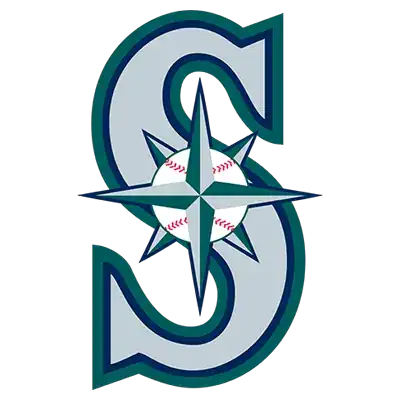
Seattle Mariners (+2200 to +2500)
Seattle’s franchise is overlooked because of history; the Mariners have never reached the World Series in their 40+ year history.
They play in a smaller media market on the West Coast, so they don’t get as much national attention. Despite ending a 20-season playoff drought in 2022, the Mariners missed the postseason in 2023 and 2024 by narrow margins, so bettors wrote them off as perennial underachievers. Public perception hasn’t caught up to Seattle’s strong roster, and that’s reflected in their roughly +2200 odds (about a 4% implied chance of a title).
The current Mariners squad has a different feel. For one, their offense, which has long been a weak point, has turned into a surprise strength. Young hitters have stepped up, and power-hitting catcher Cal Raleigh has been having an amazing season, as he leads the majors with 38 home runs at the All-Star break. With Raleigh pacing the lineup and star center fielder Julio Rodríguez capable of getting hot down the stretch, Seattle can score runs more reliably than in years past.
Their pitching rotation, which was among the league’s best in 2024, has the room to improve in the second half of 2025. Injuries to key starters (like George Kirby and Logan Gilbert) hurt them early on, but as those arms return to health, the Mariners could regain a top-tier staff. If the rotation approaches its 2024 form (when Seattle had the lowest starters’ ERA in the AL), this team becomes super dangerous.
Another factor? The Mariners have a loaded farm system and could be aggressive at the trade deadline. They haven’t won a division title since 2001, and management could make a deal (or two) to bolster an already solid core. All told, Seattle has the upside of a World Series contender hidden inside a team the betting market views as a longshot.
With current futures odds in the +2200 to +2500 range, Seattle’s implied championship probability is about 4%. That feels really low given that models put their postseason odds around 69% and a championship chance near 2–3% even before any deadline moves. If you believe in their momentum and potential upgrades, a small speculative stake (about 0.25–0.5 units) on the Mariners could pay off massively. This is a high-upside flyer, and it’s the kind of bet you make now and hope to cash in October if the Northwest’s underrated stars keep cooking!

Boston Red Sox (+2900 to +3500)
The Red Sox are a famous franchise, but in 2025? They’ve been dismissed by oddsmakers and bettors. Why? A lot of it comes down to pitching uncertainty.
Boston’s rotation depth was questionable to start the year, and nagging injuries and a lack of proven aces have kept public confidence low. Their bullpen has also been wobbly at times, and that’s led to plenty of blown leads. The Sox made a curious offseason move by trading away their best hitter, Rafael Devers, as part of a mini-rebuild, which people assumed signaled a step back this year. As a result, their World Series odds drifted out to around +3000 or even +3500 at some books (~3% implied chance). In a division with powerhouses like the Yankees and Blue Jays, the Red Sox have been treated as afterthoughts.
Despite all the skepticism, Boston has hung in the playoff race. A big reason for this is their youth movement on offense. After Devers was sent to San Francisco, a trio of young players filled the void and then some. Outfielder Ceddanne Rafaela raised his batting average from .220 to the .320s and hit a dozen homers in six weeks.
Top prospects like Roman Anthony and Marcelo Mayer have come up and started contributing as well. The lineup has more power than people expected, even after they lost a superstar.
Now, consider the potential pivot at the trade deadline: Boston’s front office has money to spend and knows pitching is the glaring need. If they acquire a solid starter and a reliable reliever (or two) by the July 31 deadline, which many analysts deem likely, this team’s outlook changes drastically.
A better pitching staff behind a rock-solid offense could make the Red Sox a very tough out in September and beyond. They’ve also gotten contributions from surprise sources, and if one of their injured pitchers (or an unheralded arm) steps up as a late-season “ace,” look out. Boston is a couple of moves away from going from longshot to legit contender, and those moves could be imminent.
The Red Sox are hovering around +3000 to +3500 odds to win the World Series, implying about a 3% chance at best. That’s a swing-for-the-fences kind of bet, but it’s in no way as far-fetched as it sounds.
Their current record has them in wild-card contention, and betting models still give Boston around a 2% chance to win it all (even pre-deadline). If you wager on the Sox now, you’re betting on the come: that they’ll shore up the pitching soon and make a late push. It’s the literal definition of a high-risk, high-reward play. Worth a quarter or half-unit as a contrarian pick for the bettors who believe a key trade could be in the cards. Just know this: this is a longshot for a reason, and they’ll need all of the pieces to fall in the right place.

Milwaukee Brewers (+1500–1600 to +4500)
How can a team with one of the best records in baseball still be a “longshot”? Welcome to the small-market paradox!
The Milwaukee Brewers stormed out as one of MLB’s hottest teams with an 11-game winning streak in July that catapulted them to the best record in the majors at one point. As of late July, they’re sitting atop the NL Central with a record north of .580 and on pace for 90+ wins.
Still, most bettors (and sportsbooks) have been slow to anoint the Brewers as championship favorites. Public money still pours in on teams like Los Angeles, New York, or Philadelphia, keeping Milwaukee’s futures price relatively longer than their performance merits. Oddsmakers opened the Brewers around +3500 last fall, and even after their midseason surge, they’re roughly +1500 to +1600 now.
Part of this is legacy bias: Milwaukee has never won a World Series and last appeared in one back in 1982. And they traded away star closer Devin Williams this past winter and former ace Corbin Burnes the year before, making preseason analysts assume they were retooling. But the Brewers have defied those expectations and have assembled a young, exciting core, and the betting public hasn’t caught on.
The Brewers might be the most well-rounded team Milwaukee has fielded in a decade. After a sluggish 0–4 start, they found their footing and haven’t looked back. A wave of rookies and younger players has injected life into the lineup, and Milwaukee leads the MLB in wins above replacement from rookies this year. An infusion of talent (breakout performances from guys in their early 20s) has made them a more athletic and dynamic team than the homer-or-bust Brewers of recent years.
They’re top 5 in the league in team defense and have a deep pitching rotation that has stayed effective even when injuries happen. The return of ace Brandon Woodruff from injury was the catalyst for that 11-game win streak; his presence (1.65 ERA in his first three starts back) gave the club a jolt. If Milwaukee continues to get quality pitching and clutch hitting? There is zero reason they can’t be a force in October. They’ve shown they can beat elite teams and win close games. And because they’re not a big-market team, the Brewers relish their role as an underdog. They have a chip on their shoulder, and that attitude can make them a threat in a postseason series. In a year with no ringer team, Milwaukee has the makings of a team that could go all the way, even if most bettors haven’t clocked it.
If you grabbed the Brewers at +4500 earlier this summer, congrats on an awesome value pick! Those odds have since shrunk to around +1500 or +1600 as of late July, after their hot streak and rise to first place.
At +1500, the implied probability is about 6.25%. That’s still a respectable value given Milwaukee’s standing; remember, the model in early July saw their championship odds at roughly 5–6%. Even now, some sportsbooks and bettors are still skeptical, and that’s an opportunity.
If you believe the Brewers are “for real,” taking them at ~15-1 isn’t unreasonable, though the best window of value (back when they were 30-1 or 45-1) has passed. This could be a team to watch for dips; if they hit a rough patch and the odds drift longer again, it could be time to jump on it. Otherwise, a small token bet now can still pay off nicely. Here’s a reassuring note: sportsbooks have indicated that the Brewers winning it all would be a good outcome for them, meaning that not many people have bet on Milwaukee. That tells you just how under-the-radar this club is!
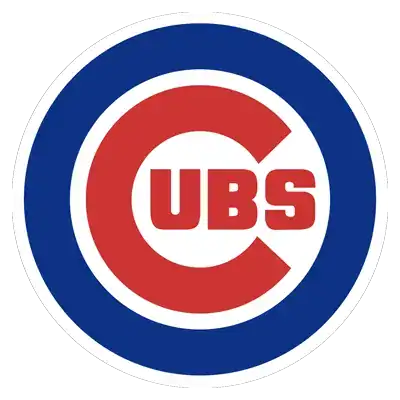
Chicago Cubs (+1400)
The Cubs’ presence on this list surprised us, too! Chicago is a big franchise with a really famous fan base. But coming into 2025? The Cubs weren’t on the short list of expected contenders. They’d been in mini-rebuild mode since their 2016 championship core was broken up, and most thought they were still a year or two away from serious contention.
That skepticism lingered even as the Cubs got off to a nice start this season. The public and oddsmakers tend to view the Cubs as a middle-of-the-pack team, not one of the elite juggernauts, and that’s why their World Series odds opened around +3000.
And even though they’re near the top of the NL Central, you can still find them at about +1400 (14-to-1) odds to win it all. In percentage terms, that’s about a 6–7% implied chance, and that shows caution from bettors who aren’t totally sold that the Cubs are “for real.”
Plus, when people think of the NL pennant, they think Dodgers, Braves, Phillies…the Cubs haven’t been in that conversation for a while, and that has kept their betting support pretty modest.
The Cubs have become a well-balanced, dangerous team, and their lineup has been a revelation. Chicago’s offense never seems to go cold for long; they are one of only two teams in baseball that haven’t been swept in a series of 3+ games this year, largely because even when the pitching falters, the hitters keep them in games. The Cubs rank second in the majors in batting percentage and third in stolen bases, which is a rare combo of power and speed that makes them a threat to score in any number of ways.
Two catalysts illustrate this new Cubs attack: Pete Crow-Armstrong and Kyle Tucker. Crow-Armstrong (a 23-year-old rookie center fielder) and Tucker (an All-Star whom the Cubs signed away from Houston) have given Chicago a pair of dynamic, five-tool talents. Both can crush a ball over the fence and steal a crucial bag. Around them, the vets and young players are contributing, and the defense is vastly improved (one of the top-ranked units in MLB).
On the mound, the Cubs aren’t as star-studded, but they have depth and a bullpen that’s better than people realize; closer Daniel Palencia has been clutch. And Chicago is likely to be active at the trade deadline. Sitting in a playoff position with a real shot at the division, the Cubs front office has signaled that they’ll be looking to add a starting pitcher and maybe a third baseman before July 31. Any notable addition could elevate this team’s ceiling further, and they’ve already shown they can go toe-to-toe with the NL’s best during the regular season. If they get into October, their combo of power, speed, and defense, and that Wrigley Field magic, could carry them on a deep run. They won’t be anyone’s favorite matchup in the playoffs, that’s for sure.
The Cubs are currently around +1400 to win the World Series, and it’s a marked improvement from the 30-1 odds they had in the preseason. That implies a 7% chance, and some advanced metrics and simulations have them in the same ballpark. ESPN’s model gave Chicago about a 15% chance to win the NL and roughly a 15.4% (+550) chance to win the World Series as of the All-Star break, which suggests the betting market might still be a little behind on the Cubs.
At 14-1, the value isn’t as big as the longer shots on this list, but Chicago is a relatively solid middle-ground bet. This is a team on the upswing that might have the consistency to do it. A half-unit play on the Cubs could be justified if you have faith in their trajectory; it’s not the lottery ticket payout of a true longshot, but it’s still a nice price for a team that’s looking like a legit contender. As always, shop around; if you can find +1500 or better, that’s even sweeter for a club with this kind of talent!

Texas Rangers (~+3100) (if still available)
The Texas Rangers hoisted the World Series trophy in 2023, but fast forward to 2025? A lot of bettors have lost faith in them. After a strong 2024 follow-up, the Rangers hit a bad stretch in the first half of 2025. Injuries to their pitching staff have been a big story. Ace Nathan Eovaldi missed a lot of time with a trip to the injured list, and other starters dealt with ailments, which cooled optimism around the defending champs.
The offense also underperformed early in the season, which was a surprise given their star power. Sportsbooks and the public reacted by drifting Texas’s odds upwards. At one point in June, when the team was sitting around .500, the Rangers were being offered at +5000 (50-1) longshot odds. And although Eovaldi is back and the team is trying to climb in the standings, their odds are still relatively inflated; around in the +3000 range at many sportsbooks (~3% implied). The market may have overreacted to Texas’s mid-season slump, and that presents value if you believe in their resurgence.
This is largely the same core that won a championship two seasons ago, so they know how to get it done in October. The Rangers’ biggest reason for optimism is the return of their pitching firepower. Nathan Eovaldi made his comeback from the IL in late June, and while his first start looked rusty, manager Bruce Bochy said, “it’s only going to get better with him” as he rebuilds his arm strength.
Other rotation pieces like Martín Pérez and Dane Dunning have been solid, and there’s hope that Tyler Mahle (who was also injured) could contribute down the stretch. A healthy Rangers rotation is a strength; remember, this was a team built on pitching depth and an explosive offense, which underachieved early but still has championship-caliber talent: Corey Seager, Marcus Semien, Adolis García, and company. There’s a sense that this lineup is too good to stay down forever. Since the All-Star break, Texas’s hitters have shown signs that they’re waking up. The Rangers also have that intangible “been there before” factor, so the moment won’t be too big for their clubhouse if they can make it into the postseason.
The Rangers are around +3100 in the futures market at the moment (give or take, depending on where you shop), which is an implied probability of around 3.1%. For a team with Texas’s pedigree, that’s really intriguing! It’s rare to get the defending World Series champions at 30-1 odds. Granted, that price reflects the uphill battle they face to make the playoffs this year; they’ll need a big finish to secure a spot. It’s a classic high-risk play: you’re betting on a talented team to overcome earlier struggles and peak at the right time. A small bet (0.25–0.5 units) on Texas could be warranted for contrarian bettors who trust the Rangers’ “championship DNA” and recent positive signs. If they catch fire in August, those 30-1 odds will disappear, so consider this one to be a speculative flyer on a battle-tested squad. It’s by no means a safe bet, but the payout could be huge if the Rangers rally for another October run.
Summary Table
| Team | Odds | Implied % | Why It’s Valuable | Suggested Stake |
|---|---|---|---|---|
Mariners | +2200–2500 | ~4–4.5% | Young stars blooming; strong offense & rotation upside | 0.25–0.5 units |
Red Sox | +3000–3500 | ~3% | Underrated lineup; potential pitching upgrades coming | 0.25–0.5 units |
Cubs | +1400 | ~7% | Revamped power-speed offense; upgraded roster & defense | ~0.5 units |
Brewers | +4500 (early) / +1600 now | ~2% → 6% | Hottest team in MLB; youth infusion but still under-bet | 0.25 units (early); small now |
Rangers | ~+3000 | ~3% | Pitching getting healthy, recent champions’ experience | 0.25–0.5 units |
The Brewers’ odds moved fast! They went from around +4500 in early July to about +1500–1600 by late July as they surged to the league’s best record!
How to Bet World Series Futures: Final Strategy Tips
Follow these tips if you’re gonna bet on World Series futures!
- Split your bets: Pair a high-payout team or two with a shorter-odds contender.
- Compare odds: Lines jump between sportsbooks, so shop around so you can lock in the best number.
- Stay plugged in: Trades, injuries, and call-ups can and do change the market quickly.
- Log your tickets: Track stakes, payouts, and teams so you know exactly where you stand.
Recommended Longshot Bets for Late July
What do we recommend in terms of longshots? Here’s what we are backing:
- Top Pick | Mariners (+2200‑2500): They have a balanced lineup, their rotation is getting better, and they are still priced like a mid-tier club!
- Top Contrarian | Red Sox (+2900‑3500): The young hitters are stepping up to the plate, pitching upgrades are likely to happen, and sportsbooks haven’t adjusted.
- Solid Value | Cubs (+1400): Chicago has a really strong combo of power and speed, a solid defense, and a lot of room to improve at the deadline.
FAQs About MLB Futures Betting
Okay, it’s the end of July, and even though October is months away, it’ll be here before we know it! Still, it is far enough off that you probably have some questions about how it all works, so here are the FAQs that we get from readers about it.
And if you’re new to betting on futures, our sports betting guide can help you understand the basics before diving into World Series odds.
What’s the Difference between Odds and Probability?
Odds show you what you’ll win, but the number is only an implied chance of it happening. +2000 suggests about a 4.8% shot; the lower the odds? The more likely a team is expected to win, according to the sportsbook. You can convert odds with our free tool into percentage terms to figure out if there’s any real value in the number you’re seeing!
Can You Cash Out World Series Futures Mid-Season?
You can at most sportsbooks! If your team’s on the upswing, you’ll usually see a mid-season cash-out offer. It won’t match the full value, but it gives you a way to lock in profit or cut your risk. If your sportsbook doesn’t offer that, you can still hedge manually by betting on other outcomes later on.
Do Sportsbooks Adjust Longshot Odds Aggressively?
They absolutely do! One hot stretch or a big trade can send a team’s odds skyrocketing up the board. The reverse is true as well; injuries or a losing skid can cause a team to fall rapidly. Once public money starts to come in, books move quickly to adjust.
What Happens if a Team Gets Eliminated before the Playoffs?
Your bet’s a bust. World Series futures only pay if your team wins the title, and there’s no refund for making a run and losing. That’s why it’s so important to treat these as long-term, high-upside plays, not as any kind of a guarantee.
The Best Futures Can Come with Doubt
As with every sport, the big-name teams hog all of the attention. But that doesn’t mean they’re the only ones worth betting on! The market isn’t always right, and that leaves a window for undervalued clubs to crash the October party. A few under-the-radar teams are still flying beneath pricing corrections, and if and when they make their move? Sportsbooks won’t even hesitate to slash their numbers.
If you see a team that checks enough of the right boxes and the odds haven’t caught up, now’s the time to take your shot. Remember to keep your wagers modest, spread them around, and keep track of where you’re exposed. Futures bets call for patience, but if one of them hits? You better believe it’s worth the wait!

Alyssa contributes sportsbook/online casino reviews, but she also stays on top of any industry news, precisely that of the sports betting market. She’s been an avid sports bettor for many years and has experienced success in growing her bankroll by striking when the iron was hot. In particular, she loves betting on football and basketball at the professional and college levels.

